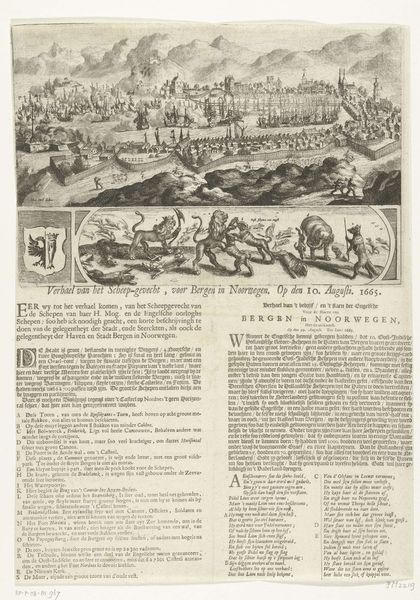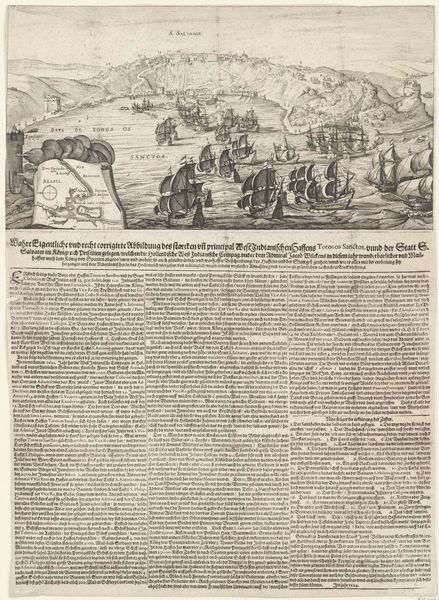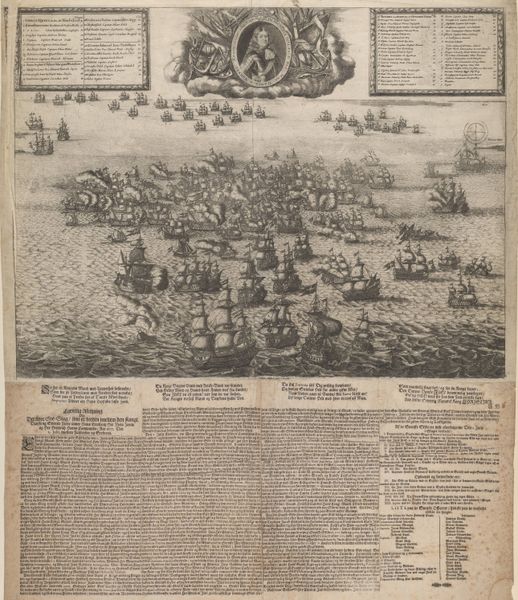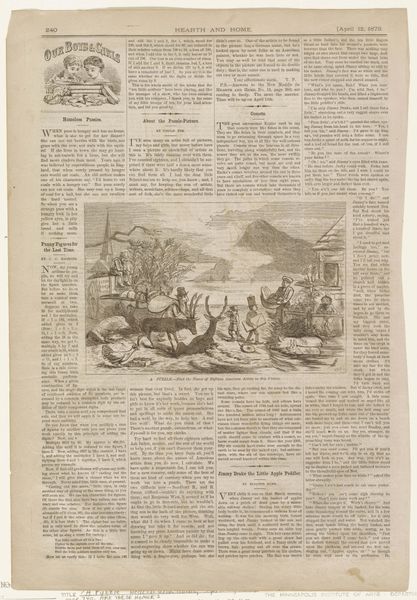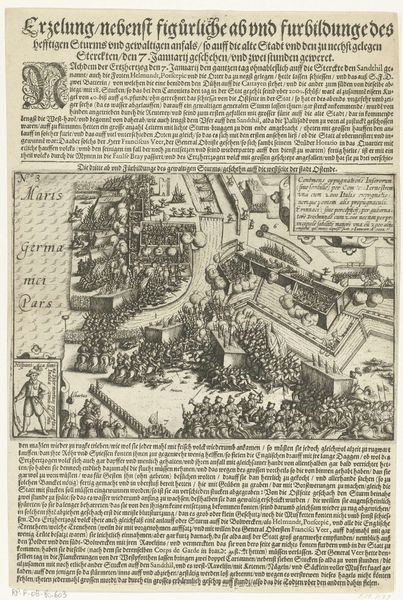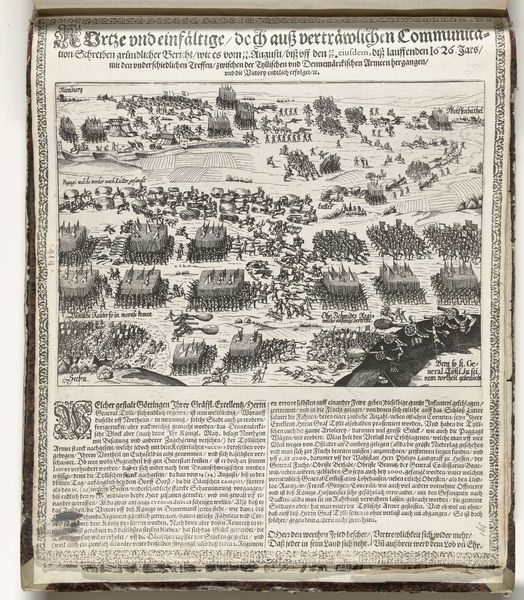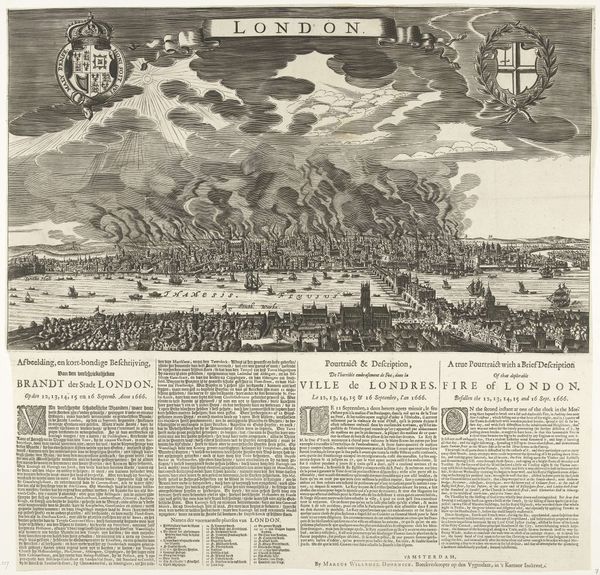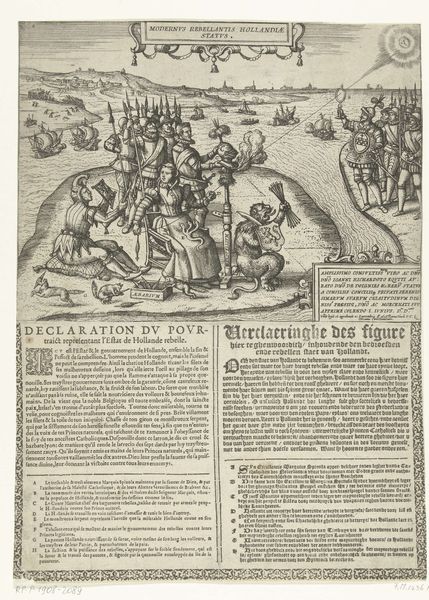
Verovering van Fort Zeelandia op Formosa door de Chinezen en de marteling en moord op de gereformeerde predikanten, 1661 1662 - 1663
0:00
0:00
print, engraving
#
baroque
# print
#
cityscape
#
history-painting
#
engraving
Dimensions: height 470 mm, width 352 mm
Copyright: Rijks Museum: Open Domain
Editor: This print, "Verovering van Fort Zeelandia op Formosa door de Chinezen…" from 1662-1663 by Crispijn van de Passe II, depicts the siege of Fort Zeelandia. It’s overwhelming in its detail—a layered, almost comic-book style narrative. How do you interpret this work? Curator: It's vital to see this image as a form of early propaganda. Consider the Dutch Republic's anxieties around colonial power. This print isn’t a neutral record but a deliberate construction. It juxtaposes the geographical overview of the siege with vignettes of violence, framing the Dutch as victims. We need to question how it reinforces a particular colonial narrative. How does the artist visually emphasize Dutch suffering and heroism, whilst erasing the perspectives and agency of the Chinese and indigenous populations? Editor: I see that. The small scenes surrounding the central image really do seem to emphasize Dutch figures in positions of suffering. Curator: Exactly. The supposed torture of reformed preachers plays into existing anti-Asian tropes and anxieties of religious persecution. It essentializes a complex power struggle into simple victimhood, which served to garner public support and legitimize future colonial ventures. We must examine the print as a tool of constructing national identity through the exploitation of 'others.' Consider how the depiction of Chinese figures dehumanizes them and denies any legitimate claim to Formosa. Editor: That makes me think differently about all the figures within the picture. Curator: Right. Thinking critically about who is centered, who is marginalized, and how that contributes to a broader understanding of power dynamics is really at the heart of art history and visual culture. Editor: This conversation gave me a new framework for approaching not only prints like this, but visual culture broadly!
Comments
No comments
Be the first to comment and join the conversation on the ultimate creative platform.

